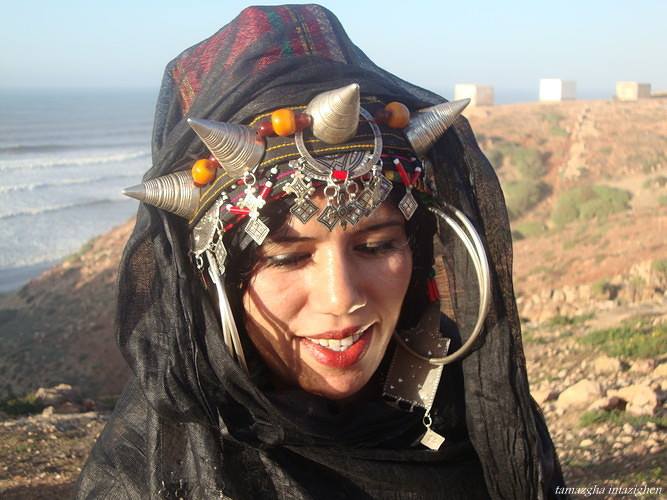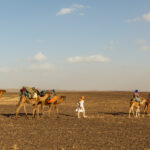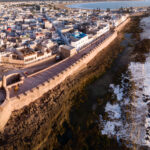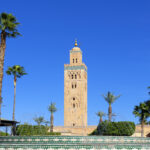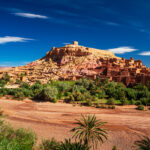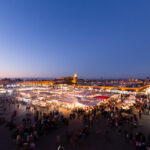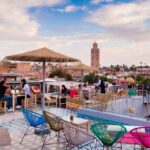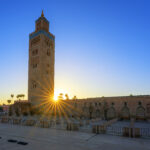Who Are the Berbers of Morocco?
Morocco is a country rich in culture and history, and to truly understand its essence, you must learn about the Amazigh, specially Moroccan Amazigh also known as the Moroccan Berbers or berbers in general. These indigenous people have lived in North Africa for thousands of years, long before the arrival of Arabs or Europeans. The Amazigh have maintained a strong sense of identity, a unique language, traditional arts, and music. Despite facing numerous challenges over the centuries, they have remained resilient and committed to preserving their cultural heritage.
Who Are the Amazigh?
The Amazigh, whose name means “free people” in the Tuareg language, are the true indigenous inhabitants of North Africa. Most of them live in Morocco and Algeria. Historians believe that the Amazigh arrived in Morocco during the second or third millennium BCE, migrating from the Near East. Unlike many other cultures, the Amazigh preserved their history and beliefs through oral traditions, passing down stories, songs, and poetry from one generation to the next.
The Romans gave the Amazigh the term “Berber,” meaning “barbarian.” This name is still in use today, but it remains controversial. Many Amazigh prefer to be called by their original name, rejecting the label “Berber.”
A History of Resilience
Throughout history, the Amazigh have faced numerous invasions and attempts at colonization. When Arab Muslims conquered North Africa in the 7th century, many Amazigh refused to be subdued. Instead, they retreated to the mountains and deserts of Morocco, where they could maintain their independence and cultural practices. This resilience has become a defining characteristic of the Amazigh people.
Today, the Amazigh make up about half of Morocco’s population. Understanding their culture provides valuable insight into the broader culture of Morocco itself.
Moroccan Amazigh Tribes
Morocco is home to a large number of Amazigh tribes, each with distinct customs and cultural practices. The three most dominant groups are the Riffians, the Zayanes, and the Cheluh (also known as the Shilhah).
- Riffians: This group lives in the northern region of Morocco and speaks a dialect called Tarafit. They are known for their bravery and have a long history as warriors. The Riffians primarily live an agricultural lifestyle, cultivating the fertile lands of their region.
- Zayanes: The Zayanes inhabit the Middle Atlas region, particularly around Khenifra. They speak the Tazayit dialect, which varies slightly depending on the region. The Zayanes maintain a strong connection to the land and thrive in mountainous areas.
- Cheluh (Shilhah): The largest Amazigh tribe in Morocco, the Cheluh, live in the southern Atlas region, including the Souss Valley and the Anti-Atlas Mountains. They speak the Tashlheit dialect, which is widely used in Amazigh films and media. Some members of this tribe still lead semi-nomadic lives, and they are also famous for their traditional music and dances.
The Amazigh Language

The Amazigh language, Tamazight, plays an essential role in the Amazigh identity. There are six major dialects of Tamazight, and three of these are spoken primarily in Morocco: Tarafit, Tazayit, and Tashlheit.
In 2011, Morocco officially recognized Tamazight as a national language, alongside Arabic. This recognition marked a significant achievement for the Amazigh community, as it allowed schools across the country to teach their language. They also developed a new written script, Tifinagh, to preserve the language in written form.
Religion Among the Amazigh
The religious practices of the Amazigh have evolved over the centuries. The Amazigh originally practiced animism, a belief system in which all living things, including plants and animals, have a soul. They believed that everything in the world was connected.
With the arrival of Arab Muslims in the 7th century, many Amazigh converted to Islam. However, they retained some of their traditional beliefs and practices, blending them with Islamic teachings. Over time, the majority of the Amazigh adopted Sunni Islam, although some Amazigh communities practiced Judaism and Christianity before converting to Islam.
Amazigh Culture and Customs
Amazigh culture is deeply rooted in tradition, and each tribe has its own unique customs. Despite these differences, certain values unite the Amazigh people: the importance of kinship (tribal solidarity), a strong connection to the land, and their language as a source of identity.
Many Amazigh continue to live in remote mountain villages, where modern conveniences like electricity and running water are scarce. These communities rely on agriculture and livestock for their livelihood. Donkeys serve as a common mode of transportation, used for carrying goods to and from local markets. In these villages, men take responsibility for the livestock, while women manage the household.
The Role of Moroccan Amazigh Women
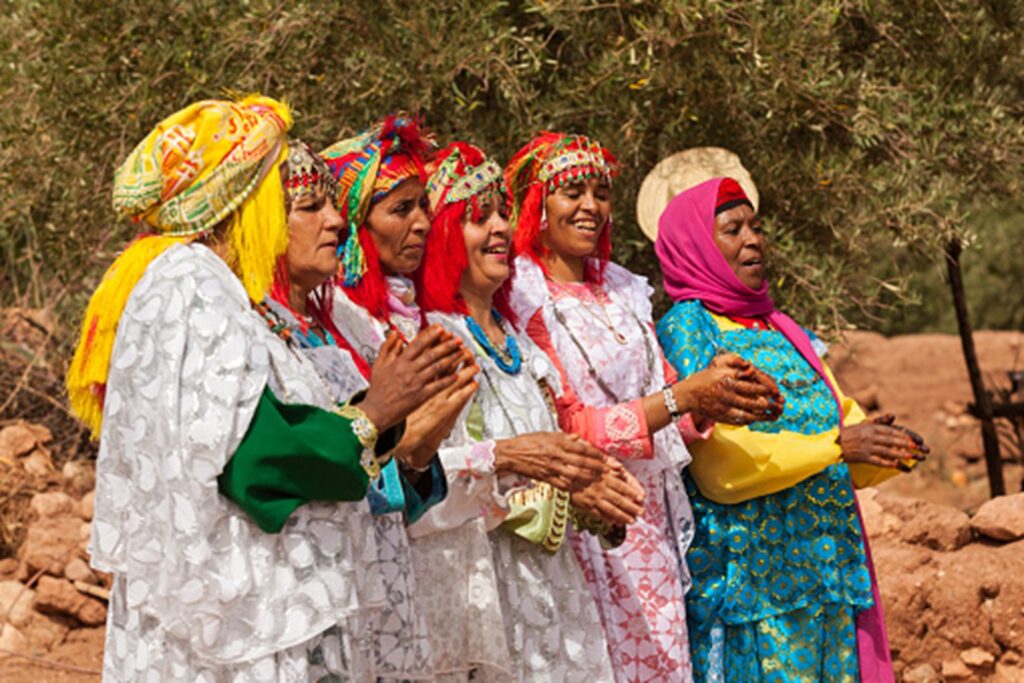
Amazigh women have always played a crucial role in their communities. The Amazigh historically emphasized matriarchy, with strong female leaders guiding their tribes. One of the most famous figures in Amazigh history is Dhabba Kahena, an ancestral queen mother known for her leadership.
Today, Amazigh women continue to be the backbone of their families and communities. They are responsible for household chores, such as cooking, cleaning, fetching water, and tending to animals. They also play a vital role in the tribal economy by weaving textiles and creating pottery. These crafts not only provide income for their families but also offer independence to widows and other women in need.
Moroccan Amazigh Art and Music
The Amazigh are known for their craftsmanship, creating beautiful, handmade items that reflect their culture and history. They weave their stories into rugs, blankets, and shawls, using vibrant colors and intricate designs. Amazigh women also practice henna art, decorating their hands and feet with intricate patterns. In the past, many Amazigh women had tattoos, but this practice has declined due to Islamic beliefs.
Pottery holds great significance in Amazigh culture. Women create pots, bowls, and other items used for cooking, storage, and decoration. They often adorn these items with symbolic designs.
Music plays an integral role in Amazigh life, especially during celebrations and festivals. Traditional instruments include the ginbri (a plucked lute with three strings), the bendir (a snare frame drum), and the tende (a drum made with mortar and pestle). The Qaraqib, large metal castanets, are also commonly used. Some well-known Amazigh musicians include Ammouri Mbarek, Najat Aatabou, and the modern Amazigh rock band Jubantouja.
Challenges Facing the Moroccan Amazigh Today
In modern times, the Amazigh people face new challenges in preserving their cultural identity. One of the most significant issues involves land rights, as many Amazigh communities struggle to maintain control over their ancestral lands. The exploitation of natural resources in these areas has also become a major concern.
Despite these challenges, the Amazigh continue to fight for their rights and the recognition of their culture. In recent years, the Amazigh have experienced a resurgence in identity, with their flag becoming more visible and their language programs and media gaining popularity. The teaching of Tamazight in schools marks a significant step forward, ensuring that future generations will learn and preserve their language.
Amazigh activists work tirelessly to gain recognition and acceptance within modern Moroccan society. Their efforts are crucial in ensuring that the Amazigh culture, with its rich history and unique traditions, continues to thrive.
Conclusion
The Amazigh people are an integral part of Morocco’s history and culture. Their resilience, strong sense of identity, and commitment to preserving their cultural heritage have allowed them to endure for thousands of years. Today, the Amazigh continue to play a vital role in shaping the cultural landscape of Morocco. By learning about the Amazigh, we gain a deeper understanding of the diverse and vibrant culture that makes Morocco so unique.

